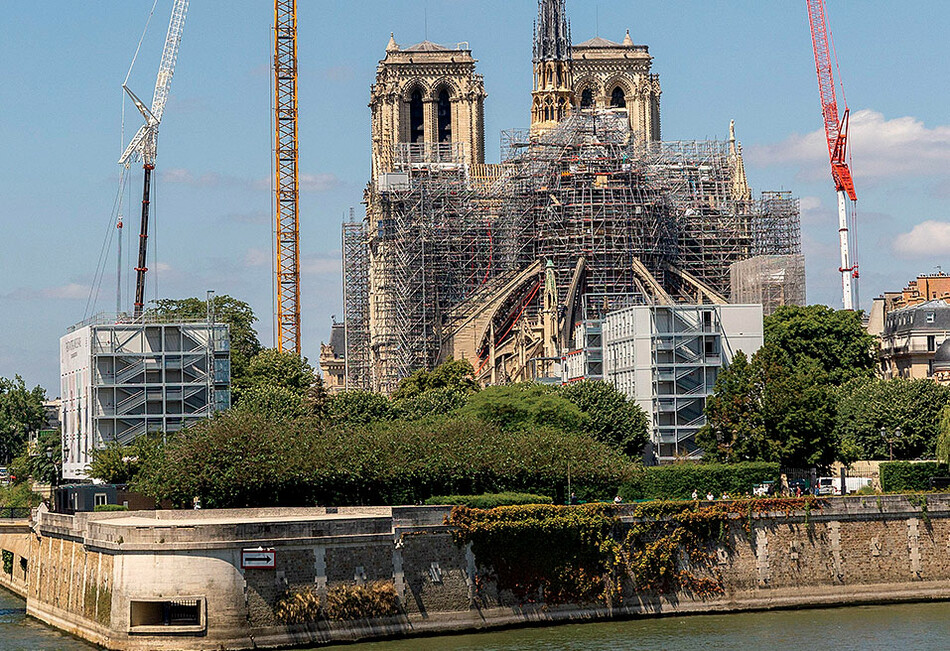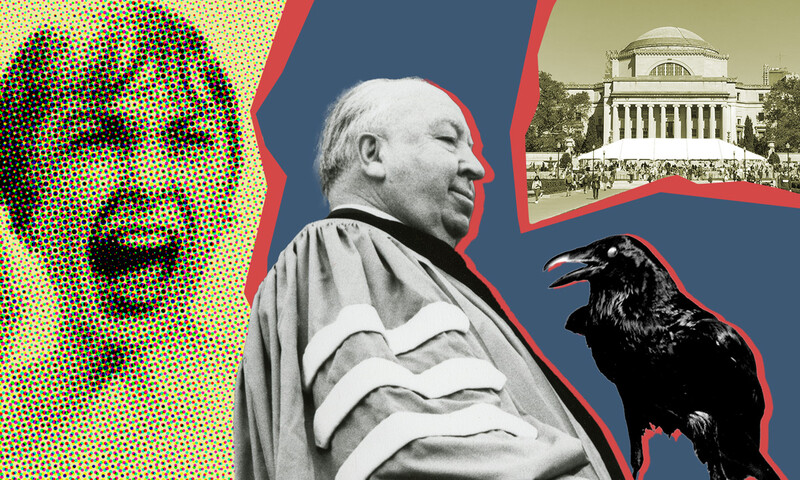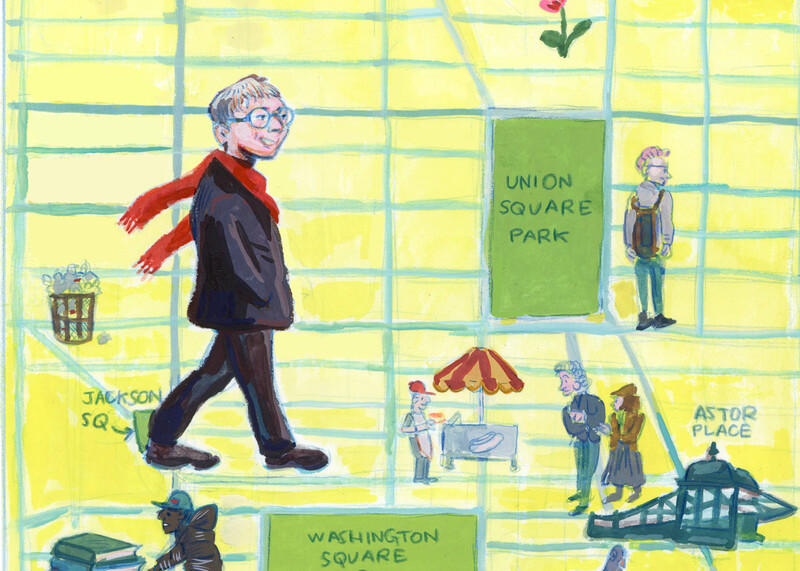Five Years and 70,000 Pieces of Scaffolding Equal One Miraculous Restoration
Anyone yearning for a good resurrection metaphor to boost the spirit in troubled times need look no further than across Amsterdam Avenue to the Cathedral of St. John the Divine. On a recent evening, under the vaulted ceiling, Barry Bergdoll ’77CC, ’86GSAS, the Meyer Schapiro Professor of Art History at Columbia, introduced a talk by Philippe Villeneuve, chief architect of the restoration of Notre-Dame de Paris, the Gothic masterpiece that was ravaged by fire in 2019.
“How moving,” Bergdoll said, “to speak in a neo-Gothic building about this miraculous ability to create a space that was so tall and so light-filled that it in fact gave invitation to think about the unthinkable — to think about heaven.” Bergdoll recounted the history of Notre-Dame from the start of its construction in 1163 through intervals of disrepair and disrespect (“There were long periods of time when Gothic architecture was considered barbaric”) to a popular revival under Napoleon (who had himself coronated at Notre-Dame in 1804) to the massive restoration that began in 1842, led by architect Eugène Viollet-le-Duc.
The 2019 blaze, its cause indeterminate, was devastating. The wooden roof collapsed, and the spire, once the tallest structure in Paris, plunged into the nave. Villeneuve, with the aid of photographs, led the audience through the process of clearing debris, securing the structure, and erecting seventy thousand pieces of scaffolding from which hundreds of restorers hammered, cleaned, and painted. The cathedral’s new spire followed Viollet-le-Duc’s design, which had replaced the Gothic original, and Villeneuve topped it with a golden, flame-winged rooster to suggest a risen phoenix. Notre-Dame was rededicated in December 2024.
As Bergdoll suggested, historical restorations, which must account for aesthetic, cultural, political, and economic factors, inevitably reflect their own times — and influence the future. “Every act of restoration,” he said, “involves a decision about what history is being recovered.”



